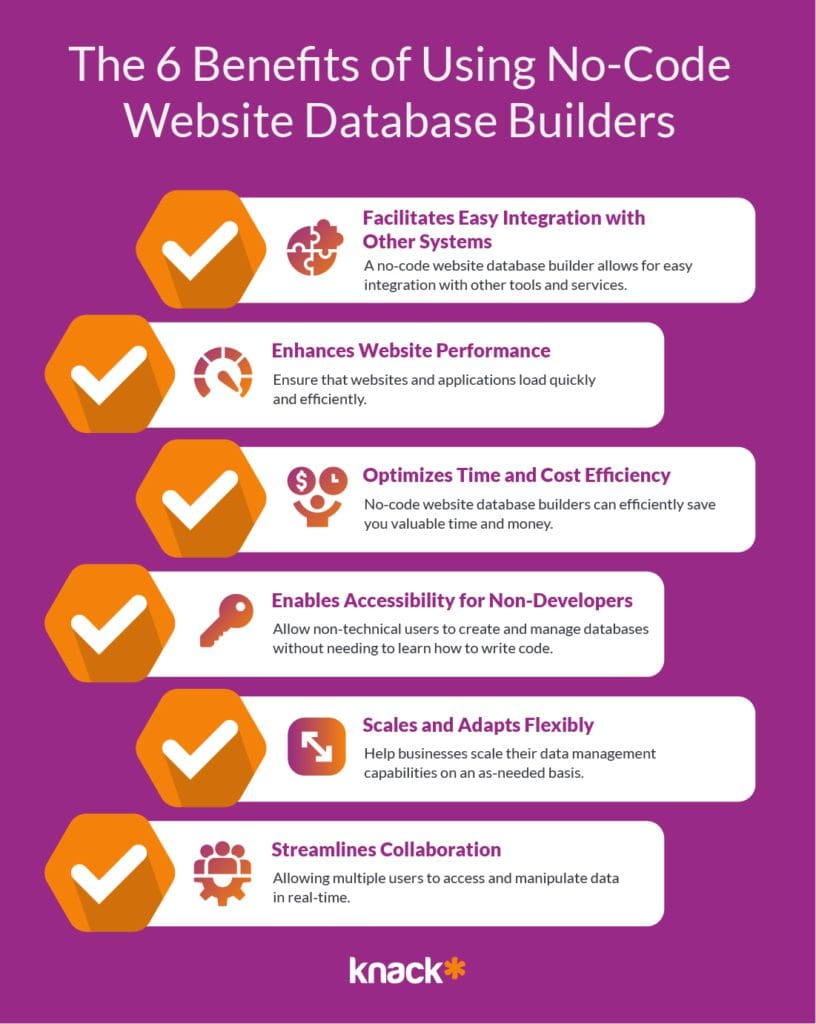No-Code Open System Database Development: Simplify Facility Development Tasks
A Comprehensive Overview to Applying Scalable Databases Without the Demand for Coding Competence
In the contemporary landscape of information monitoring, the capacity to implement scalable databases without coding experience is coming to be progressively crucial for companies of all dimensions. This overview intends to illuminate the process, focusing on easy to use devices and user-friendly interfaces that debunk database configuration. By checking out vital attributes, effective methods for execution, and ideal practices for continuous administration, we will certainly address just how even non-technical customers can confidently browse this complicated terrain. What are the important aspects that can absolutely equip these individuals to leverage scalable data sources successfully? The responses may redefine your approach to information administration.
Understanding Scalable Data Sources
In the world of modern-day information administration, scalable databases have actually become a critical remedy for organizations looking for to manage enhancing volumes of information successfully. These data sources are made to fit growth by enabling for the seamless enhancement of sources, whether via straight scaling (adding much more equipments) or vertical scaling (upgrading existing makers) This versatility is necessary in today's fast-paced electronic landscape, where data is created at an unmatched rate.
Scalable data sources generally utilize dispersed architectures, which allow data to be spread out across several nodes. This circulation not only boosts efficiency yet likewise provides redundancy, ensuring information availability also in case of hardware failings. Scalability can be a critical factor for various applications, including shopping platforms, social media sites networks, and big information analytics, where customer need can vary significantly.
Moreover, scalable data sources typically feature robust information consistency versions that stabilize performance and dependability. Organizations has to consider their specific requirements, such as read and compose speeds, information integrity, and fault resistance when choosing a scalable data source option. Inevitably, comprehending the underlying concepts of scalable data sources is vital for organizations intending to prosper in a progressively data-driven globe.
Trick Attributes to Try To Find
When examining scalable data sources, several vital features are vital to ensuring ideal efficiency and dependability. Firstly, take into consideration the style of the data source. A distributed architecture can enhance scalability by enabling information to be stored throughout numerous nodes, assisting in seamless information access and processing as demand boosts.
One more vital function is information dividing, which makes it possible for effective management of big datasets by separating them right into smaller sized, a lot more convenient pieces (no-code). This method not only boosts efficiency yet additionally simplifies resource allowance
Furthermore, seek durable duplication capacities. This function ensures data redundancy and high accessibility, lessening downtime during maintenance or unexpected failures.
Efficiency surveillance devices are likewise essential, as they provide real-time insights into system wellness and operational efficiency, permitting timely modifications to keep optimal performance.

User-Friendly Data Source Equipment
Simplicity is a crucial element in the design of straightforward data source devices, as it improves accessibility for users with varying levels of technical knowledge. no-code. These devices prioritize instinctive interfaces, allowing users to produce, handle, and query data sources without requiring extensive programming understanding
Secret features commonly include drag-and-drop functionality, visual information modeling, and pre-built themes that enhance the setup procedure. Such tools often supply assisted tutorials or onboarding procedures that assist in individual interaction have a peek at this website and lower the knowing contour. Furthermore, seamless integration with preferred information resources and services ensures that individuals can conveniently import and export information, better streamlining procedures.

In addition, durable assistance and community sources, such as forums and documents, improve the customer experience by offering support when needed. Overall, user-friendly database devices encourage organizations to harness the power of scalable data sources, making information monitoring obtainable to everyone involved.
Step-by-Step Implementation Overview
Just how can organizations successfully apply scalable databases to satisfy their growing data needs? The procedure begins with recognizing particular data needs, including the quantity, variety, and rate of data that will certainly be refined. Next off, companies need to review straightforward database tools that supply scalability attributes, such as cloud-based options or took care of data source services.
When the right tool is chosen, the following step includes setting up the database setting. This includes establishing up instances, specifying individual permissions, and developing data frameworks that line up with service purposes. Organizations ought to after that move existing data right into the new system, making certain information stability and very little interruption to procedures.
Post-migration, performing complete screening is vital; this includes performance screening under various load conditions to guarantee the system can manage future development - no-code. image source Additionally, it is essential to train personnel on the data source monitoring user interface to help with seamless use
Best Practices for Administration
Efficient management of scalable databases requires a strategic technique that focuses on ongoing monitoring and optimization. To achieve this, companies must execute durable monitoring tools that give real-time insights into database efficiency metrics, such as question feedback times, source application, and deal throughput. Routinely analyzing these metrics can assist determine bottlenecks and areas for renovation.

Normal back-ups and calamity recuperation strategies are vital to secure data honesty and schedule. Developing a routine for examining these back-ups will guarantee a dependable healing process in instance of an unexpected failing.
Moreover, efficiency tuning need to be a continual procedure. Adjusting indexing strategies, optimizing queries, and scaling resourcesâEUR" whether vertically or horizontallyâEUR" will certainly assist keep optimal performance as usage needs advance.
Lastly, cultivating a culture of expertise sharing amongst team members will certainly make it possible for continual discovering and adaptation, making sure that the administration of scalable databases remains reliable and reliable over time.
Final Thought
In final thought, the execution of scalable data sources can be successfully achieved without coding expertise through the usage of user-friendly interfaces and easy to use tools. By adhering to the described methods for arrangement, information movement, and performance testing, individuals can navigate the complexities of database management effortlessly. Stressing best methods for continuous upkeep and cooperation more boosts the capability to manage scalable databases successfully in a swiftly evolving data-driven environment.
In the contemporary landscape of information management, the capacity to implement scalable databases without coding competence is becoming increasingly important for organizations of all sizes.In the realm of contemporary data management, scalable data sources have actually arised as a vital option for organizations looking for to manage increasing quantities of information effectively.In addition, scalable databases frequently feature robust information uniformity designs that balance efficiency and reliability.Exactly how can companies effectively carry out scalable data sources to fulfill their expanding information demands? Next off, companies ought to review straightforward data source tools that supply scalability features, such as cloud-based services or handled data source solutions.